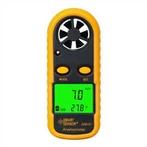Use a multimeter to measure the forward resistance of the diode, why each gear
The digital multimeter converts the measured resistance value through the A/D conversion chip to convert the analog signal into a digital signal and then displays the resistance value. The pointer multimeter displays the value through the deflection of the magnetic head. There is no resistance value in the forward and reverse directions of the diode in the resistance file test, but there is resistance in the forward direction of the diode tested with a pointer multimeter, mainly due to the following reasons:
Diode Measurements in Circuit Boards
First of all, the output voltage of the resistance gear of the pointer multimeter is different from that of the digital multimeter. Generally, the highest output voltage of the pointer multimeter is 9 volts, while the highest output voltage of the digital multimeter is generally 3 volts. Not only are their output voltages different, We choose different gears when measuring, and the output voltages are also different. The output voltage of the resistance gear of the digital multimeter ranges from 1.0 volts to 3.0 volts. The output voltage of the resistance gear of the pointer multimeter is generally higher than that of the digital multimeter. The output voltage is greater than the voltage drop value of the diode, and the diode can be turned on, but the digital multimeter is sometimes smaller than the voltage drop value of the diode, so the diode cannot be turned on, which will cause infinite forward and reverse resistance when measuring the diode.
Secondly, the voltage drop characteristics of the diodes are different, which will also cause deviations between the results of measuring the diodes when we choose the resistance range of the pointer multimeter and the results of measuring the diodes with a digital multimeter. For example, the general voltage drop value of silicon tubes and germanium tubes is 0.3 volts to 0.6 volts, but some special diodes, such as high-voltage diodes, have a relatively large conduction voltage drop of more than 0.7 volts, and our digital multimeter has a low resistance voltage, which cannot lead the diode to Pass, so the resistance value will appear infinite when measuring.
When we use a digital multimeter to measure the quality of a diode, it is best to choose the diode gear. The diode gear of the digital multimeter is generally around 2.6 volts, which is generally greater than the forward voltage drop value of the diode, and the diode can be turned on in the forward direction.
If we want to use the resistance file to measure whether there is leakage in the diode, we can choose the resistance file of the digital multimeter. At this time, the result should be that there is resistance in the forward measurement, and the resistance is infinite in the reverse measurement. The result of the pointer multimeter is also the same. If The measurement found that there is a resistance in the reverse direction, which proves that the diode may leak in the reverse direction. In this case, we need to use a special instrument to detect it. It is not accurate to use a multimeter to measure whether the diode has leakage.










